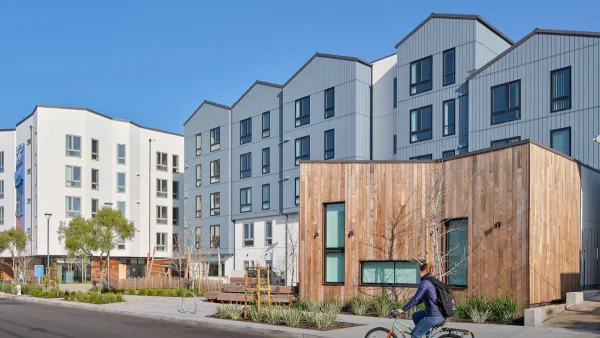The Emerald City puts the streetlight of the future to the test – for both safety and feel, and the results could affect how cities everywhere are illuminated in the future, reports William Yardley.
A fifteen-block stretch in Seattle's Ballard neighborhood was shut down to vehicular traffic last week as numerous private utilities and public agencies conducted a study to determine how the City will illuminate its streets for years to come. Roughly 300 citizens were paid to participate in the test, which probed the differences between older high-pressure sodium bulbs and newer LED ones.
Like other cities across the nation, Seattle has replaced tens of thousands of its old streetlight bulbs with LEDs, which promise to provide long-term, low-maintenance lighting at a fraction of the cost.
"Municipalities want to be sure that the significant savings in energy and costs L.E.D.'s can provide are sustainable enough to compensate for startup costs," writes Yardley, "but also that they do not threaten public safety or urban ambience."
Seattle is one of four cities so far to participate in the survey thus far, the results of which "could affect how cities everywhere are illuminated."
The test area featured both the old, high-pressure sodium and new LED lights, and consulted both pedestrians and car passengers on the visibility, safety, and feeling of the street at various points. The street was even watered to reproduce lighting conditions on a rainy night.
Said Scott Thomsen of Seattle City Light, "The big difference is you're talking not only about the efficiency of the change in technology, but also the quality of light."
FULL STORY: Seattle Gets the Street View on the Quality of Its Lights

Planetizen Federal Action Tracker
A weekly monitor of how Trump’s orders and actions are impacting planners and planning in America.

San Francisco's School District Spent $105M To Build Affordable Housing for Teachers — And That's Just the Beginning
SFUSD joins a growing list of school districts using their land holdings to address housing affordability challenges faced by their own employees.

The Tiny, Adorable $7,000 Car Turning Japan Onto EVs
The single seat Mibot charges from a regular plug as quickly as an iPad, and is about half the price of an average EV.

With Protected Lanes, 460% More People Commute by Bike
For those needing more ammo, more data proving what we already knew is here.

In More Metros Than You’d Think, Suburbs are Now More Expensive Than the City
If you're moving to the burbs to save on square footage, data shows you should think again.

The States Losing Rural Delivery Rooms at an Alarming Pace
In some states, as few as 9% of rural hospitals still deliver babies. As a result, rising pre-term births, no adequate pre-term care and "harrowing" close calls are a growing reality.
Urban Design for Planners 1: Software Tools
This six-course series explores essential urban design concepts using open source software and equips planners with the tools they need to participate fully in the urban design process.
Planning for Universal Design
Learn the tools for implementing Universal Design in planning regulations.
Smith Gee Studio
City of Charlotte
City of Camden Redevelopment Agency
City of Astoria
Transportation Research & Education Center (TREC) at Portland State University
US High Speed Rail Association
City of Camden Redevelopment Agency
Municipality of Princeton (NJ)




























